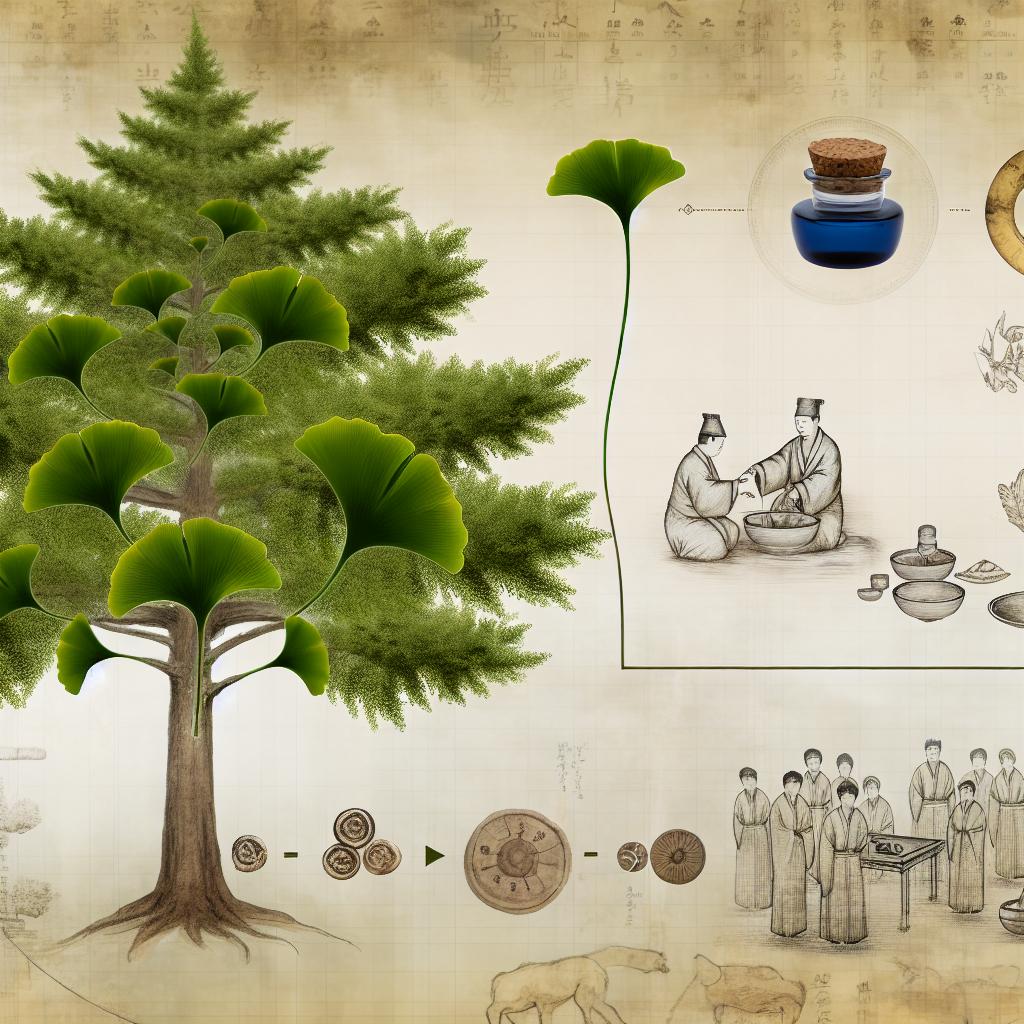The History and Origin of Ginkgo biloba
Ginkgo biloba, commonly referred to as the maidenhair tree, is a tree species that stands out with its distinctive fan-shaped leaves and its extensive history as a therapeutic plant. Known for surviving over 200 million years, it is celebrated as one of the most ancient living tree species found on Earth. It is native to China and is often called a “living fossil” due to its continuous existence despite dramatic changes in climate and the environment over the ages.
In contemporary times, Ginkgo biloba has been cultivated across the globe, yet its initial journey as a plant used for medicinal purposes was rooted in ancient Chinese traditions. Here, we delve into its expansive history and development through time.
Ancient Use in Traditional Medicine
The employment of Ginkgo biloba in traditional Chinese medicine stretches back millennia, where ancient healers tapped into the power of the tree’s seeds and leaves for an array of health advantages. Written records from these early periods indicate its use primarily for mitigating respiratory concerns like asthma and persistent coughs, showcasing its respiratory benefits that were recognized thousands of years ago.
Besides its respiratory applications, the Chinese acknowledged the potential of Ginkgo biloba seeds to tackle digestive issues and conditions related to bladder health. Consistent and widespread usage across these domains underscored the cultural and therapeutic importance of Ginkgo biloba, making it a crucial element in Chinese traditional medicine.
Introduction to the Western World
The advent of Ginkgo biloba in the Western countries occurred much later, with its first documentation appearing in the 17th century by European botanists who began to take interest in its unique characteristics. Initially, its adoption in Europe was primarily ornamental; its aesthetic appeal found a place in the gardens of herbalists and naturalists.
Over time, Ginkgo biloba’s medicinal properties sparked further investigation. By the latter half of the 20th century, research into its health benefits led to heightened interest, resulting in a considerable rise in its utilization. This period marked a turning point as Ginkgo biloba entered various dietary supplements marketed across North America and Europe, touting numerous health benefits.
Modern Applications and Research
Today’s interest in Ginkgo biloba largely revolves around its promise in cognitive support and mental health. More than a few studies have explored its capacity to enhance memory capabilities, especially among the elderly population. Despite some variability in research outcomes, Ginkgo biloba has become a staple ingredient in supplements designed to bolster brain health.
Moreover, ongoing scientific endeavors continue to examine its antioxidant traits, contributing to the understanding of its benefits in improving blood circulation and supporting cardiovascular wellness. The compounds found in Ginkgo biloba are speculated to assist in dilating blood vessels and reducing platelet aggregation, thus potentially aiding circulatory function.
Its antioxidants particularly target free radicals, the unstable atoms that can damage cells, contributing to aging and a variety of health conditions. By curtailing oxidative stress, Ginkgo biloba may play a protective role in maintaining cellular health.
Other Health Applications
Besides cognitive and cardiovascular applications, research has ventured into additional uses. For instance, some studies have delved into its potential role in alleviating anxiety symptoms. While comprehensive results are still forthcoming, preliminary research underscores the potential calming effects that Ginkgo biloba may exert, warranting more rigorous studies in this area.
Additionally, there has been interest in Ginkgo biloba’s impact on eye health, specifically in conditions like glaucoma and age-related macular degeneration. These conditions often result in diminished vision, and some investigations suggest that Ginkgo’s ability to enhance blood flow could be beneficial in preserving eyesight.
Safety and Dosage Considerations
The widespread usage of Ginkgo biloba necessitates an understanding of safety and proper dosing. While it is generally well-tolerated, some individuals may experience mild side effects such as headaches, stomach upset, or allergic skin reactions. Special consideration should be given to individuals on anticoagulant or antiplatelet drugs, as Ginkgo can affect blood clotting, potentially increasing bleeding risks.
For effective results and safety, it’s crucial to adhere to dosing guidelines as prescribed in supplements or as advised by a healthcare professional. Understanding individual health needs and existing medical conditions is vital in determining how Ginkgo biloba can be integrated into a health regimen.
Conclusion
Ginkgo biloba‘s long and storied history as a medicinal plant highlights its significant legacy through the ages. From its roots in ancient Chinese healing practices to its contemporary presence in herbal supplements, the tree’s diverse applications continue to attract interest both in historical research and modern scientific inquiry. While research is ongoing to fully elucidate all of its therapeutic possibilities, Ginkgo biloba’s historical path demonstrates its enduring importance in health and wellness from traditional to modern times. As studies advance, it may unlock more of its potential benefits, continuing its role as a revered natural remedy across cultures.

